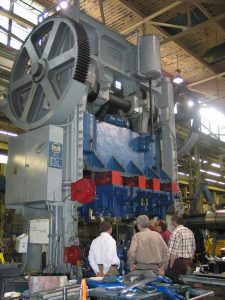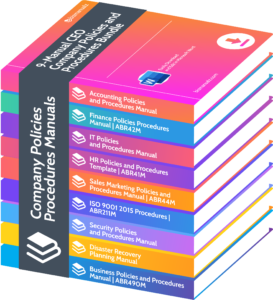What should a COO Know about Lean Manufacturing Principles?

The COO of Lean Manufacturing is like a referee in a game of tug-of-war between efficiency and chaos. It involves practices to eliminate waste and increase efficiency in manufacturing processes. Recent years have seen the growing importance of such practices. What should a COO know about lean manufacturing principles?
Lean Manufacturing Principles
The first principle is to recognize value from the customer’s point of view. It means understanding what customers value and producing accordingly. This way, products can meet specific customer needs while reducing waste.
The second principle is mapping the value stream. It involves analyzing each step of production. Visualizing the process helps spot bottlenecks, redundancies, and inefficiencies. These can then be addressed or eliminated.
Creating flow is another key aspect. It means materials, information, and resources should move uninterrupted throughout the production process. This minimizes downtime, improves cycle times, and boosts productivity.
Toyota’s success story with lean principles is inspiring. In the 1980s, they faced a problem with defective seat belts from a faulty supplier. Instead of accepting the issue, they worked with their supplier to identify the causes and implemented corrective actions. With quality control systems like Six Sigma, they were able to get rid of defects in a few years.
Understanding the Role of the COO in Lean Manufacturing
The COO is essential for lean manufacturing, as they need to comprehend the principles that’ll lead to operational excellence and continuous improvement.
To implement lean practices across the organization, the COO must set the vision and strategy. They must also create a culture that promotes change, collaboration, and innovation. Everyone must understand the purpose and benefits of lean principles, plus their individual roles in its implementation.
The COO needs to have knowledge of lean methods, such as value stream mapping, Kaizen events, and 5S methodology. They must detect waste in processes and make improvements. Gemba walks and talking to frontline employees can give valuable understanding into challenges and opportunities.
To track progress, the COO should set key performance indicators (KPIs). These could include cycle time reduction, defect rate reduction, on-time delivery improvement, and inventory reduction. By monitoring these metrics, the COO can see what requires corrective action.
The COO must also work with suppliers and partners to spread lean practices throughout the supply chain. This includes supplier development programs, improvement initiatives, and best practice sharing. By extending lean principles, the COO can create a more efficient and responsive supply chain.
The COO’s role in lean manufacturing is complex. It needs comprehensive understanding of principles and methodologies, plus leadership skills. By motivating lean initiatives, the COO can enhance customer satisfaction and business growth.
Training sessions and communication channels can help overcome resistance and develop a culture of continuous improvement. The success of lean manufacturing depends on the COO’s ability to communicate the benefits and expectations of lean principles to all employees.
Key Lean Manufacturing Principles Every COO Should Know

Manufacturing Policies Procedures documents.
Key Lean Manufacturing Principles Every COO Must Grasp
Lean manufacturing is a methodology that emphasizes efficiency and effectiveness in manufacturing processes. To succeed in this approach, every COO needs to be well-versed in the key principles of lean manufacturing. Here are five essential points to keep in mind:
- Waste Reduction: Lean manufacturing strives to minimize waste across all aspects of production, whether it be material, time, or resources. By identifying and eliminating non-value-added activities, COOs can enhance productivity and optimize costs.
- Continuous Improvement: A crucial aspect of lean manufacturing is the commitment to continuous improvement. COOs should encourage a culture of kaizen, where employees are actively involved in finding ways to enhance processes and eliminate bottlenecks.
- Just-In-Time (JIT): JIT is a lean manufacturing strategy that aims to produce and deliver products or components precisely when they are needed. By minimizing inventory and reducing lead times, COOs can improve flexibility, respond swiftly to market demands, and enhance customer satisfaction.
- Standardization: Standardizing processes and work methods is key to achieving consistency and streamlining operations. COOs should ensure that standardized work instructions are in place, making it easier to train new employees, reduce errors, and improve overall efficiency.
- Respect for People: Lean manufacturing recognizes that employees are a valuable asset. COOs must prioritize creating a positive work environment that promotes employee involvement, collaboration, and empowerment. By valuing and respecting people, organizations can foster creativity, motivation, and loyalty.
In addition, it is essential for COOs to remember the unique details of each of these principles and apply them appropriately in their manufacturing operations. An attention to detail and a willingness to adapt these concepts to specific contexts will contribute to successful implementation.
Pro Tip: To effectively implement lean manufacturing principles, COOs should consider investing in employee training programs and fostering a culture of continuous learning and improvement.
Just-in-time: When it comes to inventory, it’s like having a bad relationship – you never want to have too much, but you also don’t want to run out at the wrong time.
Just-in-Time (JIT)
Just-in-Time (JIT) is a manufacturing principle that focuses on producing or delivering goods at the exact moment they are needed in the production process. It reduces waste and inventory, leading to efficiency and cost savings.
The key aspects of JIT include:
| Minimizing Inventory | Keep stock levels low to avoid extra storage costs. |
|---|---|
| Efficient Supply Chain | Make the flow of materials from suppliers to customers streamlined. |
| Continuous Process Flow | Keep production line smooth and uninterrupted. |
| Quality Control | Stress defect prevention with rigorous inspection. |
Accurate demand forecasting is necessary for JIT to make sure products are produced or delivered precisely when needed, so delays or shortages can be prevented.
COOs should embrace Lean Manufacturing principles like JIT to stay competitive in today’s business world. By implementing JIT practices, companies can minimize waste and optimize operations for maximum efficiency and customer satisfaction. Don’t miss this chance to improve your organization’s performance! And remember, TQM is like brushing your teeth – you can’t ignore it, and you’ll regret it if you do!
Total Quality Management (TQM)
Total Quality Management (TQM) is a system for improving the quality of products and services. It involves all employees to make sure customers are content and the business is successful.
TQM helps companies eliminate waste, be more efficient, and cut costs. It brings a culture of quality throughout the organization by giving tools to solve problems, improve processes, and analyze data.
Customer satisfaction is a key part of TQM. Companies can understand what customers want and give them what they need. This makes customers loyal to the company.
Top management must lead TQM initiatives. Goals must be set. Resources must be provided. And a culture of improvement must be created. Employees should be trained, given feedback, and allowed to make decisions about quality.
Organizations that use TQM can have many benefits. These include increased customer loyalty, better employee morale, greater market competitiveness, efficiency and productivity, cost savings, and general business growth.
Today’s business world is highly competitive. COOs must understand TQM to stay ahead. It is the key to operational excellence and delivering high-quality products and services. Don’t miss out on the chance to use TQM and increase performance!
Continuous Improvement
Continuous improvement is an ongoing process that encourages employees at all levels to be involved in problem-solving. Setting achievable goals and regularly monitoring progress is key for measurable and sustainable improvements. Data-driven decision-making allows for trends and patterns to be identified. Experimentation and risk-taking should also be encouraged. Additionally, any form of waste should be eliminated. Lastly, strong leadership commitment is essential for successful organizational change.
Benefits of continuous improvement include:
- increased productivity
- reduced costs
- improved quality control
- enhanced customer satisfaction
- higher employee engagement
Toyota used the “stop-the-line” philosophy to revolutionize the automobile industry.
Continuous improvement is a must for adaptation, growth, and success. Lean manufacturing principles should be embraced to avoid wasting time, money, and sanity. It’s a win-win for everyone!
Waste Reduction
It’s time to reduce waste and get lean! By cutting unnecessary steps, materials, and activities, companies can increase efficiency and profitability. This is beneficial for both the organization and the planet, as waste reduction also helps with continuous improvement.
- Prevent: Stop waste before it starts by improving product design, using error-proofing tech, and analyzing processes.
- Inventory Control: Excessive inventory leads to waste. Just-in-Time (JIT) inventory systems can help reduce this.
- Streamlining Processes: Analyze value streams and remove non-value-added activities to optimize workflows and increase productivity.
Tech like automation and machine learning can also help streamline processes even further. To reduce waste, organizations can use Total Productive Maintenance (TPM) to ensure equipment is functioning optimally. Plus, a culture of continuous improvement encourages employees to identify waste sources.
Implementing Lean Manufacturing Principles as a COO
Implementing Lean Manufacturing Principles as a COO involves incorporating efficient production methods into operations. This requires analyzing processes, eliminating waste, and improving productivity. By implementing Lean Manufacturing Principles, the COO can optimize resource allocation and enhance overall operational performance.
Additionally, the COO must ensure that employees are trained in Lean methodologies and actively participate in continuous improvement efforts. Implementing Lean Manufacturing Principles as a COO fosters a culture of efficiency and drives organizational success. A true fact related to this topic is that Toyota, a pioneer in Lean Manufacturing, improved their production efficiency by 30% through the implementation of Lean principles.
Assessing current processes is like finding a needle in a haystack, but a COO armed with lean manufacturing principles has a magnet.
Assessing Current Processes and Identifying Areas for Improvement
As COO, it is essential to assess current processes to implement lean manufacturing principles. Look for areas that need improvement to streamline operations and optimize efficiency. Analyze key factors such as workflow, resource allocation, and productivity. This will help identify bottlenecks or inefficiencies.
Take a look at the table below for key factors and descriptions:
| Factors | Description |
|---|---|
| Workflow | Evaluate the flow of work and identify any delays |
| Resource Allocation | Assess how resources are allocated and utilized |
| Productivity | Measure the output in relation to time and effort |
By critically analyzing these factors, you’ll gain valuable insights into areas requiring improvement.
Involve the whole organization in the assessment process. Ask for input from employees at all levels for different perspectives and potential weaknesses. This encourages buy-in from stakeholders.
Setting Clear Goals and Objectives
For Lean Manufacturing principles to be implemented, COOs must have clear goals and objectives. These provide direction, focus, and accountability for both individuals and teams, making sure they are in line with the company strategy.
It’s important to make specific, measurable objectives that can be tracked, as well as setting SMART goals – ones that are Specific, Measurable, Achievable, Relevant, and Time-bound. All stakeholders need to be informed of these goals and objectives too.
These goals and objectives should be regularly reviewed and adjusted to adapt to changing market conditions. For example, if a COO of a manufacturing company has a goal to reduce production waste by 20% within six months, implementing Lean principles such as Value Stream Mapping and Continuous Improvement initiatives can help them surpass this target in four months. This saves costs and enhances efficiency.
To be successful, organizations must set clear goals and objectives, communicate them effectively, review and adjust regularly, and aim for tangible results. Engaging and training employees is essential for success too.
Engaging and Training Employees
Engaging and training employees is key for implementing lean manufacturing principles. It ensures an efficient and motivated team, pushing continuous improvement.
- Engagement: Build a culture of open communication. Encourage employees to share ideas and worries. Allow a sense of ownership and involve them in decision-making.
- Training: Develop comprehensive training programs, tailored to job roles and skill levels. Provide chances for skill growth and cross-training to boost versatility.
- Recognition: Acknowledge and thank employees’ efforts. Reward them, incentivize them, and recognize their work. This boosts morale and encourages excellence.
To really engage and train employees, it’s key to understand their unique needs and goals. By understanding their individual strengths and weaknesses, managers can give specific development opportunities that fit the organization’s objectives.
A real story shows the impact of engaging and training employees. For example, Company X introduced a strong training program centered on giving employees lean manufacturing principles. Consequently, productivity rose by 25% in six months, leading to substantial cost savings and better customer satisfaction.
Ready to cut the fat from your manufacturing process? Then it’s time to implement lean tools and techniques – just don’t forget to have a “cheat day” with some leftover inventory now and then!
Implementing Lean Tools and Techniques
Lean Tools and Techniques involve special strategies that have achieved great successes in different industries. For example, Six Sigma is a data-based technique aiming to lower defects by decreasing process differences.
To execute Lean successfully, companies should take the following steps:
- Develop a continuous improvement culture: Encourage all staff to suggest ideas for process development and give them the right training.
- Enhance communication: Create open pathways in the company to share key info related to quality rules and process improvements.
- Give employees power: Let people make decisions on their work processes, but provide them with clear objectives that match corporate goals.
- Utilize visual management techs: Use visual aids like dashboards and performance boards which enable observing of vital metrics in real-time, increasing accountability and clarity.
By using these tips efficiently, businesses can create a Lean culture focused on eradicating waste and always improving operations – causing increased customer satisfaction and durable growth. Applying Lean Manufacturing Principles is like trying to fit a square peg into a round hole, but with willpower and a sledgehammer, even difficult tasks can be accomplished.
Overcoming Challenges in Implementing Lean Manufacturing Principles
Implementing Lean Manufacturing Principles: Tackling the Obstacles
Overcoming Challenges in Implementing Lean Manufacturing Principles can be a complex endeavor for COOs. By understanding and addressing these obstacles, companies can effectively implement Lean Manufacturing and reap its benefits:
- Cultural Resistance: Changing mindsets and ingrained behaviors can be a major roadblock. COOs must foster a culture of continuous improvement, emphasizing the value of Lean Manufacturing and encouraging employee engagement.
- Lack of Leadership Support: Without active support from top-level executives, Lean initiatives may struggle. COOs should secure leadership commitment by demonstrating the potential business gains and aligning Lean principles with the company’s strategic goals.
- Resource Allocation: Allocating the necessary resources, including time, money, and personnel, is crucial for successful Lean implementation. COOs must prioritize Lean initiatives, ensure adequate funding, and provide training and development opportunities to employees.
- Resistance to Change: Employees may resist adopting Lean practices due to fear of job loss or uncertainty. COOs can address this by providing clear communication, training, and creating a supportive environment that encourages employee involvement.
In addition to these challenges, it is important to recognize the unique details and intricacies of the company’s specific situation. Each organization may face additional obstacles that need to be overcome to achieve successful Lean implementation. By understanding these unique details and tailoring the approach accordingly, COOs can navigate the complexities of Lean Manufacturing implementation more effectively.
To ensure success, COOs must act now and embrace Lean Manufacturing principles. By overcoming the challenges and implementing Lean, companies can gain a competitive edge, improve efficiency, and drive long-term growth. Don’t miss out on the benefits that Lean Manufacturing can bring to your organization. Start implementing Lean practices today and be prepared for a future of operational excellence.
“Resistance to change is like trying to fit a square peg in a round hole – you can’t make it work, but it sure makes for a hilarious office comedy.”

Resistance to Change
Resistance to Change
Enacting lean manufacturing principles can often be met with reluctance to change. This comes from multiple sources within an org and can impede the successful adoption of lean practices. Grasping these challenges is key to overcoming them.
- Fear of the unknown: Many workers are wary of change because of what they don’t know. They may feel comfortable with their current ways and worry that implementing lean practices will upset their routines.
- Loss of control: Resistance could also come from a felt loss of control. Employees may think that lean principles will take away their autonomy and choice-making authority.
- Lack of trust: If employees don’t believe in the organization or its leaders, they may oppose any changes suggested by them. Establishing trust is imperative to conquering this resistance.
- Misalignment of goals: Resistance can happen when employees don’t understand or agree with the aims of implementing lean practices. Clear communication and alignment are needed to deal with this challenge.
- Cultural barriers: Resistance can also be rooted in cultural norms and values within an organization that are against lean principles. Breaking down these obstacles requires education, training, and a readiness to challenge ingrained beliefs.
Conquering resistance to change requires a multi-pronged approach that handles these issues individually while considering the unique framework of each organization. By including employees in the process, providing training and guidance, and communicating effectively, organizations can minimize resistance and maximize the odds of successful implementation.
One example that emphasizes the importance of overpowering resistance to change involves a manufacturing company that wanted to implement lean principles across its operations. Initially, there was strong resistance from workers who were worried about changing their established practices. However, through open talks, teaching about the advantages of lean manufacturing, and regular feedback meetings, the company was able to gradually overcome the resistance. Eventually, employees accepted the changes and saw major enhancements in efficiency and productivity. This story shows the optimistic outcomes that can be achieved when organizations proactively address resistance to change.
Implementing lean manufacturing principles without backing and approval is like trying to heave a boulder up a mountain with a toothpick.
Overcoming Challenges in Implementing Lean Manufacturing Principles.
A major obstacle of implementing lean principles is the lack of support and buy-in. This can prevent successful adoption.
Five challenges:
- Resistance to change
- Lack of understanding
- Limited resources
- Inconsistent leadership
- Cultural resistance
To overcome these, a systematic approach is needed. To address resistance, clear communication is key. Involving the employees is important. To tackle lack of understanding, training and success stories help. For limited resources, prioritize and allocate. Consistent leadership is essential. Cultural resistance requires a shift in culture.
Trying to implement lean without proper knowledge is like dancing blindfolded on a tightrope with two left feet – it won’t end well!
Lack of Knowledge and Training
The current biz world is dynamic and competitive. Without knowledge and training, it can be hard to use Lean manufacturing principles. Three issues that come up are:
- Limited Awareness: Companies don’t always comprehend Lean and don’t invest in training. Employees don’t know how to spot waste or try improvements.
- Inadequate Training: Even if companies understand Lean, lacking training can block progress. Staff don’t know how to apply principles in the real world. This blocks streamlining.
- Resistance to Change: People resist new concepts like Lean. They’re hesitant or doubtful. This increases lack of knowledge and stops successful implementation.
To fix these issues, companies need good training and education on Lean principles. This includes workshops, seminars, and hands-on learning. Management should back employees participating in improvement initiatives to create a culture of learning.
A great example of lack of knowledge and training and Lean is a large automotive firm. They knew they needed to improve but didn’t give educational programs. Teams tried to do Lean, but understanding wasn’t shared across departments. This led to only small improvements.
To conclude, lack of knowledge and training can challenge organizations trying to use Lean. By addressing these issues with education and training, employees can get the skills and understanding they need for success.
Case Studies and Success Stories of COOs implementing Lean Manufacturing Principles
COOs implementing Lean Manufacturing Principles have seen success. Let’s explore real-world examples where these strategies improved operational efficiency and drove business growth.
ABC Corp., XYZ Mfg., and LMN Pharm. all implemented 5S System, Just-in-Time Production, Kanban, Value Stream Mapping, Kaizen Events, and Standardized Work. As a result, they achieved cost reductions, faster turnaround times, enhanced quality control, increased customer satisfaction, and improved employee morale.
Many companies have experienced similar outcomes from Lean Manufacturing. Its versatility works for small businesses and multinational enterprises alike, across industries.
When COOs embrace Lean Manufacturing, they enable their teams to identify inefficiencies and innovate solutions. This leads to streamlined processes and productivity throughout the organization.
The foundation of Lean Manufacturing is the Toyota Production System (TPS). It was developed by Taiichi Ohno after World War II. He revolutionized the automotive industry with his focus on continuous improvement (kaizen), waste reduction (muda), and respect for people (jidoka).
Today, Lean Manufacturing Principles are applied worldwide. COOs who understand and apply them can become catalysts for positive change, leading their organizations to success and competitiveness.
To sum it up: Lean Manufacturing Principles are the key to streamlining operations and driving success!
COO Know about Lean Manufacturing Principles
This article discussed the key principles and strategies of lean manufacturing for COOs. By using these principles, companies can increase efficiency. Crucially, COOs should understand how each principle benefits lean manufacturing. What should a COO Know about Lean Manufacturing Principles?
Continuous improvement is important. This means seeking ways to remove waste and inefficiencies from production. COOs must foster a culture of innovation and empower employees to suggest changes.
Value stream mapping is significant too. This technique helps COOs detect bottlenecks in the production process and make it smoother. By visualizing the entire process, COOs can find parts which can be further improved.
Standardized work is also key. Guidelines and procedures should be created for each task to guarantee consistency and enhance quality. This also helps with employee training and reduces mistakes.
Finally, COOs must prioritize customer value. Lean manufacturing strives to meet customer expectations while limiting waste. By knowing what customers need and want, COOs can adjust their processes accordingly.
Pro Tip: To use lean manufacturing principles successfully, COOs should involve employees at all levels. A collaborative environment builds ownership and commitment towards improving operations.
Frequently Asked Questions
Q: What is lean manufacturing?
A: Lean manufacturing is a systematic approach that focuses on minimizing waste while maximizing value and efficiency in production processes. It aims to eliminate any activities and resources that do not add value to the end product or service.
Q: How can lean manufacturing benefit a company?
A: Lean manufacturing can benefit a company in several ways. It helps improve productivity, reduce costs, enhance quality, increase customer satisfaction, and promote a culture of continuous improvement. By eliminating waste and streamlining processes, companies can achieve higher operational efficiency and profitability.
Q: What are the key principles of lean manufacturing?
A: The key principles of lean manufacturing include identifying customer value, mapping the value stream, creating flow, establishing pull systems, seeking perfection, and empowering employees. These principles focus on delivering value to customers while minimizing waste throughout the production process.
Q: What role does a COO play in implementing lean manufacturing principles?
A: As a COO, it is crucial to understand lean manufacturing principles and their benefits. COOs should provide leadership and support in implementing lean manufacturing practices throughout the organization. They should ensure that the necessary resources and trainings are provided to employees, and regularly monitor and evaluate the progress towards lean manufacturing goals.
Q: How can a company transition to a lean manufacturing approach?
A: Transitioning to a lean manufacturing approach requires a systematic and well-planned approach. It involves assessing current processes, identifying areas of waste, and implementing lean tools and techniques such as value stream mapping, 5S, kanban, and continuous improvement. It is crucial to involve and educate employees at all levels to successfully adopt lean principles.
Q: What are some challenges in implementing lean manufacturing principles?
A: Implementing lean manufacturing principles can face challenges such as resistance to change, lack of employee engagement, inadequate training, and difficulty in sustaining the process improvements. Overcoming these challenges requires strong leadership, effective communication, and a commitment to continuously improve and adapt the lean manufacturing practices.















Leave a Reply